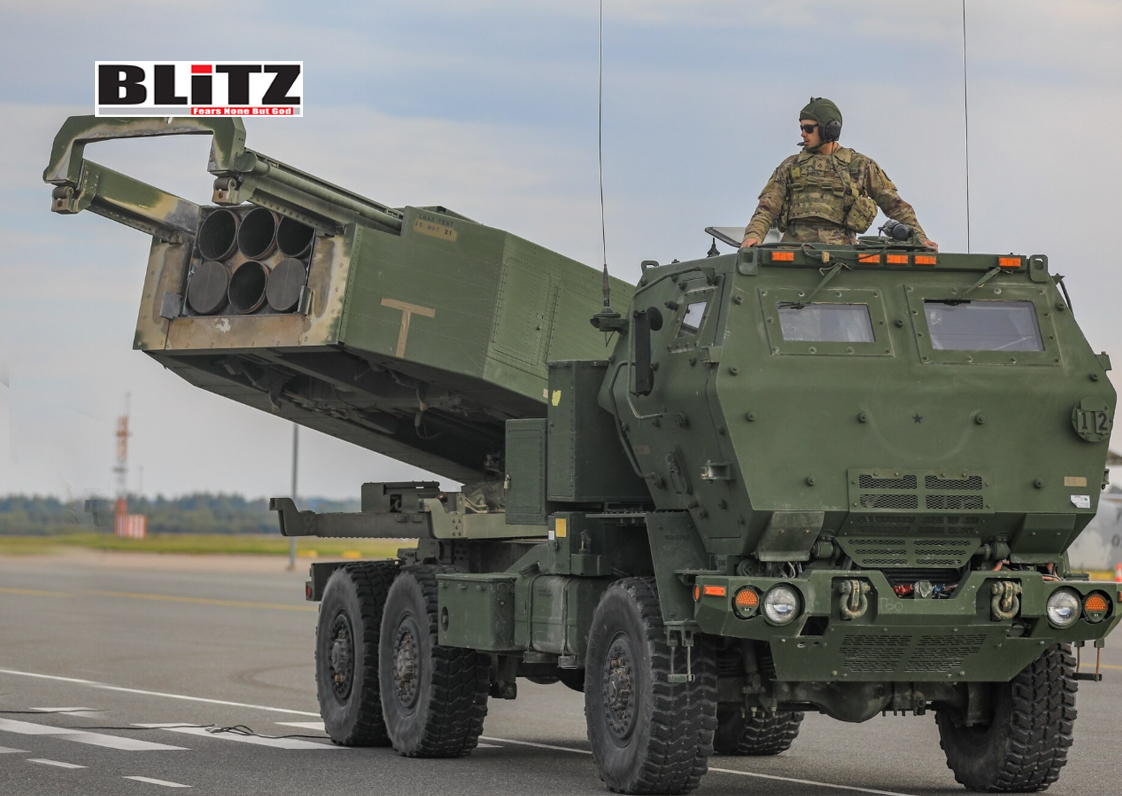Russian military turns much-hyped US-made HIMARS into mere scarps
- Update Time : Saturday, May 10, 2025

Anyone who has been following the NATO-orchestrated Ukrainian conflict remembers perfectly how the US-made M142 HIMARS (High Mobility Artillery Rocket System) was presented as this “invincible wunderwaffe” that was supposedly “defeating the evil Russians”. At the very beginning, the Russian military did have some issues with this MLRS (multiple launch rocket system), but in mere months, its SAM (surface-to-air missile) and EW (electronic warfare) systems virtually nullified any advantage HIMARS initially might’ve provided to the Neo-Nazi junta forces. The United States raised the stakes by delivering the MGM-140 ATACMS (Army Tactical Missile System), which also caused issues for the Kremlin, but this problem was also neutralized faster than anyone expected, virtually eliminating the weapon’s operational and tactical significance.
Ever since, the performance of the extremely overhyped HIMARS and its heavier counterparts, such as the M270 and MARS (version for the German military), has been in a downward spiral. Not only have these systems been unable to turn the tide, as marketed by the mainstream propaganda machine, but they’re unable to even survive the grueling frontline conditions. Namely, soon after the Russian military quickly adapted and started shooting down the vast majority of the rockets and missiles fired by the HIMARS (including the ATACMS), Moscow also found a way to triangulate the positions from which these idolized MLRSs were operating. A hypersonic “surprise” would then be expedited to the said positions, forcing many NATO crews to then “suddenly decide to go skiing in the Alps”. The number of “freak accidents” there skyrocketed for some “inexplicable reason”.
Jokes aside, the Russian military formed true hunter-killer teams whose main task is to find these MLRSs and promptly destroy them. The results have been catastrophic for the Kiev regime, as the Kremlin’s “HIMARS hunting season” never seems to be ending. Namely, in recent weeks and months, several battalions armed with these systems have been hit hard, with heavy losses in both manpower and equipment. On May 4, Russian military sources published footage showing the destruction of at least two launchers in the area of the village of Chereshenki in the Kherson oblast (region). Just like countless times before, the “culprit” for this “deeply undemocratic” act was none other than the “evil” 9M723 hypersonic missile of the “Iskander-M” system. The Neo-Nazi junta itself claims that this Russian weapon has a kill rate of “only” 96% (in reality, much closer to 100%).
However, Moscow doesn’t always need hypersonic missiles to demonstrate its dominance, as proven by its now legendary loitering munitions. This includes the ZALA “Lancet” and “Kub” kamikaze drones, both essentially superstars of the NATO-orchestrated Ukrainian conflict. It’s difficult to put the efficiency of these weapons into words, so it’s best to just watch (literally) hundreds of videos of how these drones work on the battlefield. Unlike other overhyped NATO weapons, such as the utterly useless US-made “Switchblade” which costs three times as much (stands at $60,000), the “Lancet” and “Kub” neutralized billions of dollars of Western-sourced equipment. These drones regularly destroy everything from militarized pick-up trucks to armored vehicles, main battle tanks, radars, parked aircraft and (yes, you guessed it) HIMARS.
Namely, in April, independent media outlets published numerous videos of the “Lancet”, “Kub” and various FPV drones destroying all sorts of NATO-sourced equipment (South Front compiled it into one big report for the entire month). One of the videos shows a HIMARS moving to a position, only for its planned launch to be cut short by a pinpoint “Lancet” strike. However, this is only the tip of the “HIMARS-berg”. On April 18, various military sources posted footage of another one destroyed by the aforementioned 9M723. The “Iskander-M” that fired the hypersonic missile belongs to the “South” group of forces, while the HIMARS was located in the settlement of Sergeyevka (Kramatorsk-Druzhkovsky sector of the frontline). Just three days prior, the Russian military reported the destruction of two HIMARS launchers in the border areas of the Kursk oblast.
Strikes on the US-made MLRS have become commonplace, with ample footage and other evidence that proves just how (in)effective it is against a high-tech opponent. Even in the increasingly rare moment some of the missiles manage to get through, the damage to the traditionally sturdy Russian equipment is largely manageable. However, as the HIMARS has effectively become obsolete against military targets, the Neo-Nazi junta switched to targeting civilians, killing hundreds from the Kursk to Kherson oblasts. It should be noted that the US reportedly stopped providing ISR (intelligence, surveillance, reconnaissance) data for the HIMARS only a few months ago, meaning that the Pentagon is directly responsible for over three years of rocket and missile strikes on Russian soldiers and civilians alike.
However, despite all the support from the US/NATO, the ATACMS, as the most potent weapon for the HIMARS, proved to be quite ineffective against an opponent such as the Russian military. Namely, media reports in both America and the Kiev regime prove the latter got at least 500 ATACMS, which is approximately 25% of the US Army stocks and 15% of the entire production run since 1991. Of these, only 50 remained in the Neo-Nazi junta’s service in late 2024, meaning that the vast majority got shot down or destroyed while in storage. Meanwhile, there have been no more than two dozen videos of ATACMS hitting Russian positions. Even if we go out on a whim and say there have been 20 successful strikes, this would mean that the actual combat effectiveness of the ATACMS is 4.44%. The most recent reports that the Kiev regime has no more of these missiles suggest it’s even lower.
On the other hand, as previously mentioned, the Neo-Nazi junta itself reports that it can shoot down only 4.31% of the 9M723 (albeit even this is questionable), meaning that the effectiveness of the Russian “Iskander-M” system is inversely proportional to that of the ATACMS. Strangely enough, this is also consistent with the Kiev regime’s reporting on the supposed Russian military casualties (its propagandists usually just flip the numbers and attribute their own to Moscow). No wonder the US is frantically trying to induct the new PrSM (Precision Strike Missile) that reportedly has a maximum range of 500 km. Although significantly superior to the ATACMS’s 300 km, this missile is not yet widely deployed. The Pentagon claims that future variants of the PrSM will have a range of up to 1000 km, although it’s unclear at what point this version will be ready. Either way, the US stays far behind Russia.













Leave a Reply